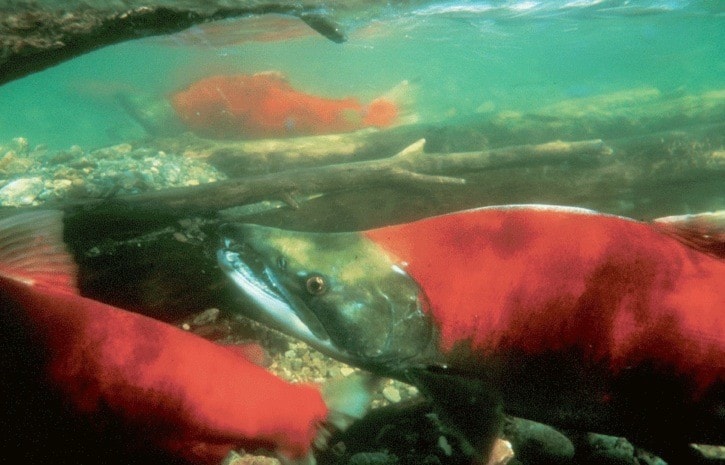Researchers say a fish virus found in Cultus Lake cutthroat trout could be impacting the endangered Cultus Lake sockeye.
Fish population expert Rick Routledge, a professor at Simon Fraser University, said the piscine reovirus (PRV) was found in 13 of 15 samples of the Cultus Lake trout.
“If PRV has been found in a Cultus Lake sport fish, it could be contributing to the failure of the lake’s sockeye population to return in abundance,” says Routledge.
The virus may be linked to other diseases found on fish farms, he said, such as the heart and skeletal muscle inflammation (HSMI), which hit Norwegian salmon farms and can kill up to 20 per cent of infected fish.
Routledge said this first detection of PRV in a B.C. freshwater sport fish indicates the virus is already be "prevalent" to some extent.
However, a fish pathologist with the B.C. Ministry of Agriculture said the link to the fish heart disease could not be established with just the detection of this virus by itself.
"I'm not surprised that the virus sequence is present because we find it in 60 to 75 per cent of farmed salmon," said Gary Marty from the Animal Health Centre in Abbotsford. "In Norway, they call PRV 'ubiquitous' because every time they sample fish, they find it."
The reovirus could have been present for "generations" in B.C. waters, he said.
The 'o' in reovirus stands for 'orphan' which means it's a virus without a disease, Dr. Marty added.
Some Canadian scientists and non-government organizations are concerned that salmon farms pose a serious risk to wild Pacific salmon, and have specifically raised concerns about the spread of PRV from farms to wild stocks.
“The discovery of PRV in Cultus Lake’s cutthroat trout also begs the question is it in other related species in the lake, such as rainbow trout, kokanee and Dolly Varden?" said Routledge in the release. "This latest discovery could also mean that salmon and trout in any lake exposed to spawning salmon returning from the North Pacific must be considered at risk of infection.”
Since the PRV cases are "not sufficient" for a diagnosis of the heart disease, Marty said he does not think the virus poses a risk to Cultus sockeye.
"Based on my knowledge of testing hundreds for the virus and not linking it to heart disease, I think that risk would be negligible," Marty said.
For example he said 300 salmon farm fish were tested and although 75 per cent were positive for PRV, less than two per cent died of heart disease.
"When you see that kind of number, you need something else to explain the heart disease. As far as I know, those (cutthroat) trout were healthy, although they were not examined by a pathologist. And when we see lots of healthy fish, it's not a serious concern for the fish."
Soowahlie Chief Otis Jasper said his concern about the virus is that it's the first known detection in a fresh-water fish species.
"In the past DFO did not provide any notice pertaining to virus detection in Cultus Sockeye, which leads to the possibility that they may already be aware of such virus findings in fresh-water fish," he said. "Maybe we're already years behind on this issue."
Soowahlie have historically relied on the supply of sockeye and other fish resources that were once plentiful in nearby rivers.
"I think we really need to look at habitat issues as well," he said.
One ongoing issue is sewage at Cultus Lake.
"In the broader context of environmental health, it's a major concern. We're already on a slippery slope around habitat protection.
"I think there's a need for leadership on this from all levels of government."
jfeinberg@theprogress.com
twitter.com/CHWKjourno
